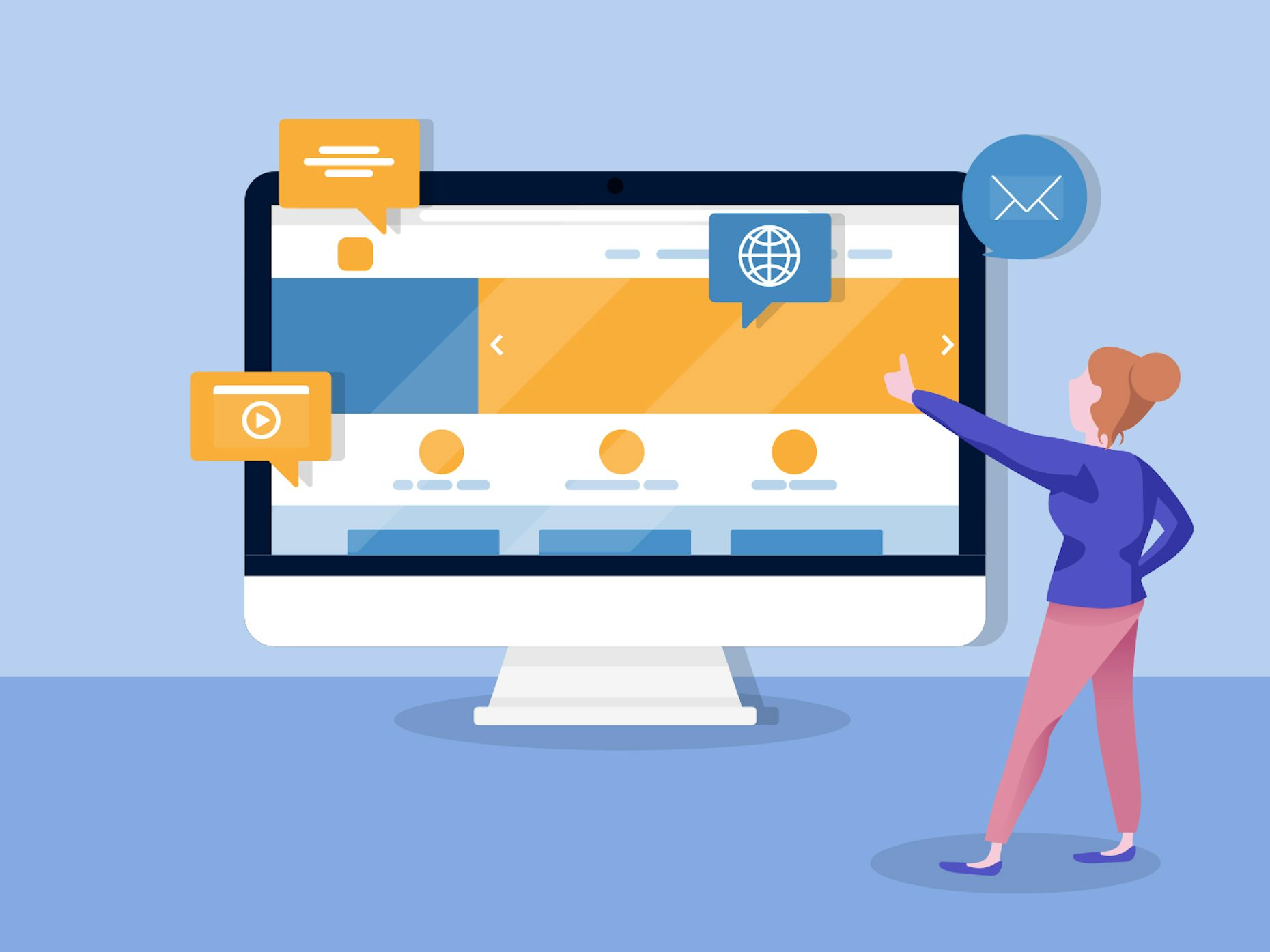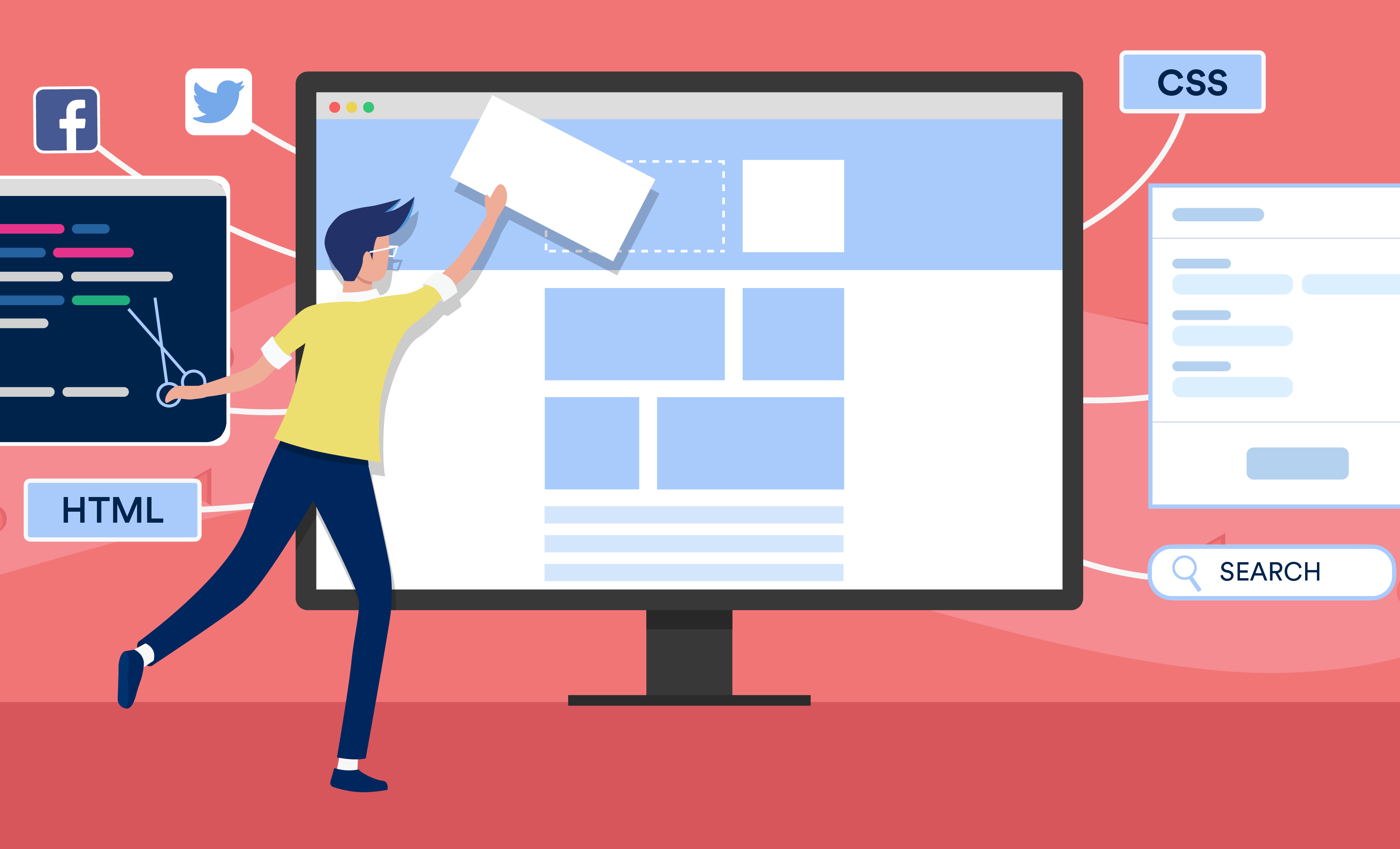All Categories
Featured
Table of Contents
- – Web Design - Linkedin Learning, Formerly Lynda...
- – Design Principles - U.s. Web Design System (U...
- – Powderkeg: Web Design Madison, Wi Tips and Tr...
- – Web Design Software By Xara Tips and Tricks:
- – Web Design - Linkedin Learning, Formerly Lynd...
- – Web Design Blog - Webdesigner Depot Webdesign...
- – Web Design Service - Professionally Designed...
- – Google Web Designer - Home Tips and Tricks:
- – Web Design Projects - Behance Tips and Tricks:
- – Basics Of Web Development & Coding Specializ...
- – Penner Home - Durham Web Design - Penner Web...
Web Design - Linkedin Learning, Formerly Lynda.com Tips and Tricks:
Quick summary Functionality and the utility, not the visual design, identify the success or failure of a website. Since the visitor of the page is the only person who clicks the mouse and therefore decides whatever, user-centric style has actually established as a standard approach for successful and profit-oriented website design - web design frederick md.
and the utility, not the visual design, identify the success or failure of a website. Considering that the visitor of the page is the only individual who clicks the mouse and for that reason chooses whatever, user-centric design has become a basic method for effective and profit-oriented website design. If users can't utilize a function, it might as well not exist.
g. where the search box should be placed) as it has actually currently been performed in a number of posts; rather we concentrate on the methods which, utilized correctly, can result in more advanced design choices and streamline the procedure of perceiving presented info. Please observe that you may be thinking about the usability-related articles we've published before: Principles Of Excellent Website Style And Reliable Website Design Standards, In order to use the principles appropriately we initially need to understand how users engage with sites, how they think and what are the standard patterns of users' behavior.
Design Principles - U.s. Web Design System (Uswds) Tips and Tricks:
Visitors glimpse at each brand-new page, scan a few of the text, and click the first link that catches their interest or slightly looks like the thing they're searching for. In reality, there are big parts of the page they don't even take a look at. A lot of users look for something interesting (or helpful) and clickable; as quickly as some appealing candidates are discovered, users click.
If a page provides users with high-quality material, they want to jeopardize the content with ads and the design of the website. This is the reason not-that-well-designed websites with high-quality material get a great deal of traffic over years. Content is more crucial than the style which supports it.

Users don't check out, they scan. Notice how "hot" locations abrupt in the middle of sentences. This is common for the scanning procedure. Really basic principle: If a site isn't able to satisfy users' expectations, then designer failed to get his task done properly and the business loses cash. The greater is the cognitive load and the less intuitive is the navigation, the more prepared are users to leave the site and search for alternatives.
Powderkeg: Web Design Madison, Wi Tips and Tricks:
Neither do they scan website in a direct fashion, going sequentially from one site area to another one. Instead users satisfice; they choose the first reasonable option. As quickly as they discover a link that appears like it might cause the objective, there is a very good opportunity that it will be right away clicked.
It doesn't matter to us if we comprehend how things work, as long as we can utilize them. If your audience is going to imitate you're creating billboard, then style excellent signboards." Users wish to have the ability to manage their browser and rely on the consistent information discussion throughout the website.
If the navigation and website architecture aren't intuitive, the variety of concern marks grows and makes it harder for users to understand how the system works and how to get from point A to point B. A clear structure, moderate visual hints and quickly recognizable links can help users to discover their path to their goal.
Web Design Software By Xara Tips and Tricks:

claims to be "beyond channels, beyond products, beyond circulation". What does it indicate? Considering that users tend to check out sites according to the "F"-pattern, these three declarations would be the first elements users will see on the page once it is packed. The style itself is basic and user-friendly, to understand what the page is about the user requires to browse for the answer.
As soon as you have actually attained this, you can interact why the system is useful and how users can gain from it. Individuals won't use your website if they can't discover their way around it. 2. Don't Squander Users' Patience, In every task when you are going to provide your visitors some service or tool, try to keep your user requirements minimal.
Newbie visitors are willing to, not filling long web kinds for an account they may never ever utilize in the future. Let users check out the website and discover your services without forcing them into sharing private information. It's not sensible to force users to go into an email address to test the feature.
Web Design - Linkedin Learning, Formerly Lynda.com Tips and Tricks:
And that's what you desire your users to feel on your web website. The registration can be done in less than 30 seconds as the form has horizontal orientation, the user doesn't even need to scroll the page.
A user registration alone is sufficient of an impediment to user navigation to reduce inbound traffic. 3. Manage To Focus Users' Attention, As sites offer both fixed and dynamic material, some aspects of the interface bring in attention more than others do. Clearly, images are more attractive than the text simply as the sentences marked as strong are more attractive than plain text.
Focusing users' attention to particular areas of the website with a moderate use of visual elements can help your visitors to get from point A to point B without thinking of how it in fact is supposed to be done. The less concern marks visitors have, the they have and the more trust they can develop towards the business the site represents.
Web Design Blog - Webdesigner Depot Webdesigner Depot Tips and Tricks:
Make Every Effort For Feature Exposure, Modern web styles are typically slammed due to their technique of assisting users with aesthetically appealing 1-2-3-done-steps, large buttons with visual results and so on. From the design viewpoint these components really aren't a bad thing.
The site has 9 main navigation choices which are visible at the first glance. What matters is that the material is well-understood and visitors feel comfy with the method they interact with the system.
com gets directly to the point. No charming words, no exaggerated statements. Instead a price: just what visitors are looking for. An optimum solution for effective writing is touse brief and succinct phrases (come to the point as rapidly as possible), usage scannable layout (classify the material, utilize numerous heading levels, utilize visual aspects and bulleted lists which break the circulation of uniform text blocks), usage plain and objective language (a promo does not need to seem like ad; provide your users some sensible and unbiased factor why they need to utilize your service or remain on your site)6.
Web Design Service - Professionally Designed Websites Tips and Tricks:
Users are hardly ever on a site to delight in the style; additionally, for the most part they are trying to find the information despite the design - web design frederick md. Make every effort for simpleness rather of complexity. From the visitors' viewpoint, the very best site style is a pure text, without any advertisements or more content blocks matching precisely the query visitors utilized or the material they've been trying to find.
Finch clearly provides the details about the site and provides visitors a choice of choices without overcrowding them with unnecessary content. 7. Don't Be Scared Of The White Area, Actually it's truly difficult to overstate the significance of white space. Not only does it help to for the visitors, however it makes it possible to perceive the info provided on the screen.
Complex structures are more difficult to check out, scan, analyze and deal with. If you have the option between separating two style segments by a visible line or by some whitespace, it's generally much better to utilize the whitespace service. (Simon's Law): the better you handle to provide users with a sense of visual hierarchy, the simpler your material will be to view.
Google Web Designer - Home Tips and Tricks:
The same conventions and guidelines ought to be used to all elements.: do the most with the least amount of hints and visual aspects. 4 major indicate be thought about: simpleness, clarity, diversity, and emphasis. Simpleness includes just the components that are essential for communication. Clearness: all elements ought to be created so their significance is not ambiguous.
Conventions Are Our Buddies, Traditional style of site components doesn't result in a dull web website. It would be an use problem if all websites had various visual presentation of RSS-feeds.
comprehend what they're getting out of a website navigation, text structure, search placement etc. A case in point from usability sessions is to equate the page in Japanese (presuming your web users don't know Japanese, e. g. with Babelfish) and offer your functionality testers with a job to find something in the page of various language.
Web Design Projects - Behance Tips and Tricks:
Steve Krug suggests that it's better to, but take benefits of conventions when you do not. 10. Test Early, Test Typically, This so-called TETO-principle should be applied to every website design job as functionality tests typically provide into significant problems and concerns related to an offered design. Test not too late, not too little and not for the incorrect factors.
Some crucial indicate keep in mind: according to Steve Krug, and testing one user early in the task is much better than screening 50 near completion. Accoring to Boehm's first law, mistakes are most regular during requirements and style activities and are the more pricey the later they are eliminated.
That implies that you design something, test it, fix it and then test it again. There might be problems which haven't been discovered throughout the very first round as users were virtually obstructed by other problems.
Basics Of Web Development & Coding Specialization - Coursera Tips and Tricks:

This holds for designers as well. After you have actually worked on a site for couple of weeks, you can't observe it from a fresh point of view any longer. You know how it is constructed and therefore you understand precisely how it works you have the wisdom independent testers and visitors of your website wouldn't have.
It can be linked to other areas such as graphic style, user experience, and multimedia arts, but is more appropriately seen from a technological standpoint. It has actually ended up being a big part of people's daily lives. It is hard to imagine the Internet without animated graphics, different designs of typography, background, videos and music.

Throughout 1991 to 1993 the World Wide Web was born. Text-only pages might be viewed using a simple line-mode internet browser. There had been no integrated method to graphic design aspects such as images or sounds.
Penner Home - Durham Web Design - Penner Web Design ... Tips and Tricks:
The W3C was produced in October 1994 to "lead the Internet to its full potential by establishing typical procedures that promote its development and guarantee its interoperability." This discouraged any one company from monopolizing a propriety internet browser and shows language, which could have altered the effect of the World Wide Web as a whole.
As this has actually happened the technology of the web has actually also moved on. There have also been considerable changes in the method individuals use and access the web, and this has changed how sites are developed.
Learn more about Lovell Media Group LLC or TrainACETable of Contents
- – Web Design - Linkedin Learning, Formerly Lynda...
- – Design Principles - U.s. Web Design System (U...
- – Powderkeg: Web Design Madison, Wi Tips and Tr...
- – Web Design Software By Xara Tips and Tricks:
- – Web Design - Linkedin Learning, Formerly Lynd...
- – Web Design Blog - Webdesigner Depot Webdesign...
- – Web Design Service - Professionally Designed...
- – Google Web Designer - Home Tips and Tricks:
- – Web Design Projects - Behance Tips and Tricks:
- – Basics Of Web Development & Coding Specializ...
- – Penner Home - Durham Web Design - Penner Web...
Latest Posts
Web Design And Development - Invision Tips and Tricks:
Arch Web Design: Top-rated Web Design Agency For Saas ... Tips and Tricks:
Web Design Certificate - Web Development Certificate Program Tips and Tricks:
More
Latest Posts
Web Design And Development - Invision Tips and Tricks:
Arch Web Design: Top-rated Web Design Agency For Saas ... Tips and Tricks:
Web Design Certificate - Web Development Certificate Program Tips and Tricks: